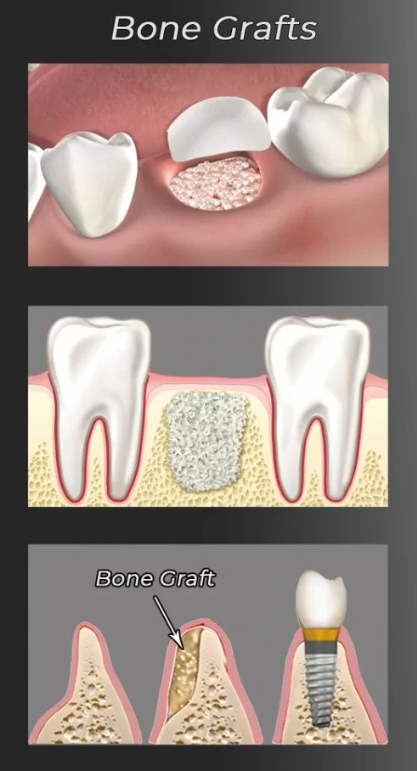Sachar Dental NYC
For SAME day / emergency appointments
Call (212) 752-1163
All the below content has been written by NYC Dentist, Dr. Sandip Sachar.
Dental Bone Graft: Building a Strong Foundation for Your Smile
Essential Role of Dental Bone Grafts
A dental bone graft is a vital procedure in modern dentistry, essential for creating a strong base for dental implants and promoting long-term oral health. This routine procedure involves replacing lost bone in the jaw, ensuring future dental treatments are more successful and restoring both function and appearance.
Understanding Dental Bone Grafts
A dental bone graft is a procedure where bone material is placed in areas where the bone has deteriorated or is insufficient to support dental implants or other dental treatments. This bone material can come from a variety of sources, including the patient’s own bone, a donor, or synthetic material. Over time, the graft integrates with the patient’s natural bone, stimulating growth and providing a stable base for dental work.

Why Is it Essential for Oral Health
It is often necessary for patients who have experienced bone loss in the jaw due to tooth loss, gum disease, or trauma. When teeth are missing for an extended period, the surrounding bone begins to resorb, or shrink. For patients considering dental implants, adequate bone volume is essential for the implant to anchor properly. Bone grafting may also be recommended to preserve facial structure and prevent further bone deterioration.
Success and Prevalence
With the growing popularity of dental implants, dental bone grafts have become increasingly common. Many dentists perform bone grafting procedures on a regular basis, especially for patients who have experienced significant bone loss or those planning for dental implants. Advances in dental technology have made these procedures more predictable and accessible to patients.
What to Expect During Procedure
The dental bone graft procedure is relatively straightforward and typically performed under local anesthesia. Your dentist will begin by making an incision in the gum to access the bone beneath. The bone graft material is then placed in the affected area, and the gum tissue is stitched back in place to allow for healing. Depending on the complexity of the procedure, you may need additional follow-up appointments to monitor healing and assess the success of the graft.
Is a Dental Bone Graft Painful?
Most patients report minimal discomfort during and after the dental bone graft procedure, as local anesthesia ensures the area is numbed. Post-procedure, there may be some mild swelling or soreness, which can be managed with over-the-counter pain relievers. Your dentist will provide post-operative care instructions to minimize discomfort and ensure a smooth recovery.
Benefits
One of the primary benefits of dental bone grafting is that it provides a strong foundation for future dental work, particularly for implants. It also helps to restore the natural contours of the jaw and face, preventing the sunken appearance that often accompanies bone loss. Additionally, the procedure can improve overall oral health by promoting bone regeneration and maintaining the structure of the jaw.
Recovery Timeline
Recovery from a dental bone graft can take anywhere from a few weeks to several months, depending on the complexity of the graft and the individual’s healing process. During this time, the graft material will integrate with your natural bone, providing a solid foundation for future dental work. Your dentist will schedule follow-up visits to monitor your progress and determine when it’s time to move forward with additional treatments, such as dental implants.
Longevity
Once fully healed, a dental bone graft can last for many years, often serving as a permanent solution for bone loss. However, the longevity of the graft depends on factors such as oral hygiene habits, overall health, and the quality of the original bone. Regular dental check-ups with your dentist will ensure that your bone graft remains healthy and functional.
Potential Risks and Complications
As with any surgical procedure, there are some risks associated with dental bone grafts, although complications are rare. These can include infection, swelling, and rejection of the graft material. In some cases, additional surgery may be required to address any issues. Your dentist will discuss these risks with you and ensure that you are fully informed before proceeding with treatment.
Why Sachar Dental NYC is the Best Choice for Dental Bone Grafting in New York City
At Sachar Dental NYC, we excel in bone graft procedures for dental implants, thanks to our specialist’s dual expertise in prosthodontics and implantology. Unlike many practices, our specialist handles every step—bone graft, implant, abutment, and crown—ensuring seamless care and precise results. This approach allows us to visualize and achieve optimal aesthetics from the start. With over 20 years of experience, we pride ourselves on our high success rate and patient satisfaction, using top-quality materials and collaborating with the best dental laboratory in New York City.
Book Your Appointment Today!
Ready to enhance your smile with a dental bone graft or implants? Trust the expertise of Sachar Dental NYC for a seamless, personalized experience. Contact us today to schedule your consultation and discover how our specialized care can give you the best results. Let us help you achieve a strong, beautiful smile with our top-tier dental solutions!
READ MORE about Dental Bone Graft on our services page.
What You Need To Know About A Dental Bone Graft
Sachar Dental NYC
20 East 46th Street
Rm 1301
(Between 5th Ave & Madison Ave)
New York, NY 10017
212-752-1163
drsachar@sachardental.com